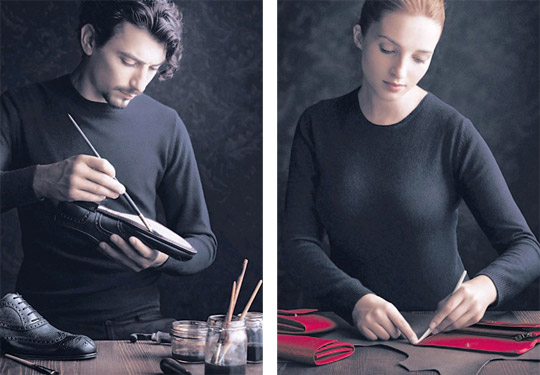
LVMH recently got into a bit of trouble in Europe for advertising their products as being handmade by small workshop artisans when in truth, a majority of their products are made on assembly lines:
There’s just one tiny detail missing. Hardly any Vuitton bags or wallets are handmade. While reporting an article on Vuitton in 2004, I visited one of its factories in the village of Ducey near Mont St. Michel. There I saw rows of workers seated at sewing machines, stitching together machine-cut pieces of canvas and leather. The partially finished bags were rolled from one workstation to the next on metal carts.
Britain’s Advertising Standards Authority then ordered them to stop not long after the ad campaign started:
The bureaucrats paid to protect the public from flimflammery declared this to be a fraud. “[C]onsumers would interpret the image of a woman using a needle and thread to stitch the handle of a bag,” the agency ruled, “to mean that Louis Vuitton bags were hand stitched.”
Fair enough, but one can’t help but think that the Standards Authority was just attempting to protect Savile Row and Northhampton craftsman, many of whom use machines for their own “handmade” work. The word is very ambiguous in marketing these days and it’s probably too late to protect it now.
What even counts as being handmade? Despite what notions we like to think of, most goods sold today were probably touched by a machine at some point – shoes need to be welted, jeans need to be sewn, and buttons need to be punched. These sorts of things should be encouraged though, as it helps efficiency (and in theory, better prices for consumers). A little leeway should be alright; after all, handwork is still involved somewhere along the way and a machine can still not beat the experience of a seamstress who has the finesse to finish those delicate details or the tailor who knows how to cut the fabric just right.
Comments are closed.